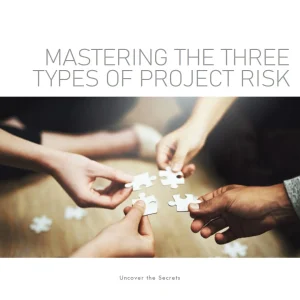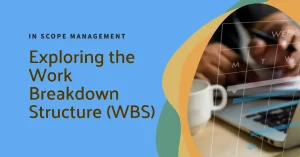To find out how Artificial Intelligence is changing the Project Management landscape, you may enjoy reading this article https://www.shaunstoltz.com/did-artificial-intelligence-just-change-everything-about-project-management/
I. Introduction
Have you ever been part of a project where communication was a complete mess, leading to misunderstandings, delays, and even conflicts? If you have, you’re not alone. Effective communication is one of the most critical aspects of successful project management, yet it’s often overlooked or undervalued. As a seasoned project manager, I’ve seen my fair share of communication mishaps and learned some valuable lessons along the way. In this blog post, I’d like to share one of those lessons with you – the importance of crafting key messages in project communication.
A. Importance of effective communication in project management
Whether you’re working on a small team project or managing a large-scale endeavor, communication is the glue that holds everything together. It enables you to align stakeholder expectations, keep team members informed and engaged, and facilitate decision-making throughout the project lifecycle. In fact, research shows that ineffective communication is a leading cause of project failure, so it’s vital to get it right.
B. Introducing key messages as a vital element of project communication
So, how can you ensure that your project communication is effective and impactful? The answer lies in creating and delivering powerful key messages. Key messages are the essential points you want your stakeholders to understand, remember, and act upon. They help to focus your communication efforts, ensuring that your project stays on track and achieves its goals.
In the upcoming sections, we’ll dive into the role of key messages in project communication, how to identify and craft them, and how to communicate them effectively for maximum impact. By the end of this blog post, you’ll be well-equipped to create powerful key messages that drive project success.
Stay tuned, and let’s embark on this journey to better project communication together!
II. The Role of Key Messages in Project Communication
As we continue our exploration into the world of effective project communication, it’s essential to understand the crucial role that key messages play. Think of them as the foundation upon which all your project communication efforts are built. In my experience, well-crafted key messages can make all the difference in ensuring a project’s success. Let’s delve into the specific ways key messages contribute to effective project communication.
A. Ensuring project objectives are clear and understood
Have you ever been involved in a project where team members seemed to be working towards different goals? It’s a recipe for confusion and inefficiency. Clear and concise key messages help to establish a shared understanding of the project objectives among all stakeholders. When everyone is on the same page, it’s much easier to work collaboratively towards a common goal.
B. Aligning stakeholder expectations and priorities
In any project, you’ll have multiple stakeholders with various concerns and priorities. Key messages serve as a bridge that connects stakeholders and helps them see the bigger picture. By addressing their concerns and demonstrating how their interests align with the project’s objectives, key messages facilitate stakeholder buy-in and support.
C. Facilitating decision-making and problem-solving
Projects rarely go exactly as planned, and your team will inevitably encounter challenges and obstacles along the way. Key messages act as a compass, guiding your team’s decision-making and problem-solving processes. They ensure that everyone remains focused on the project’s primary objectives, even when the going gets tough.
D. Enhancing team engagement and collaboration
A motivated and engaged team is essential for project success. When team members understand the project’s key messages and how their work contributes to the overall objectives, they’re more likely to be invested in the project’s outcome. This sense of purpose fosters a collaborative environment, where team members are inspired to share ideas and support one another.
As you can see, key messages play a vital role in ensuring effective project communication. In the following sections, we’ll dive deeper into how to identify, craft, and communicate these messages for maximum impact. Keep reading, and let’s enhance your project communication skills together!
III. Identifying Your Key Messages
Now that we’ve established the importance of key messages in project communication, it’s time to start developing your own. This process begins with identifying the critical information that your stakeholders need to know. I’ve found that taking the time to reflect on the following factors can help you uncover your project’s key messages:
A. Determine the project’s main objectives
Begin by asking yourself, “What are the primary goals of this project?” Your key messages should reflect these objectives and provide a clear path for your team and stakeholders to follow. By keeping the project’s main goals front and center, you can ensure that everyone stays focused on what truly matters.
B. Identify the primary stakeholders and their concerns
Next, consider the various stakeholders involved in your project, such as team members, clients, and vendors. What are their primary concerns and priorities? Your key messages should address these concerns and demonstrate how the project’s objectives align with their interests. This helps to build trust, foster collaboration, and encourage stakeholder buy-in.
C. Understand the context and the desired outcome
Every project exists within a specific context, such as industry trends, organizational culture, and market conditions. To craft relevant and impactful key messages, you need to understand this context and how it influences your project’s desired outcome. Consider any external factors that may affect your project and incorporate them into your key messages to ensure they resonate with your stakeholders.
D. Gather relevant data and insights
Finally, gather any data or insights that support your key messages and help to tell a compelling story. This could include research findings, customer feedback, or past project successes. By backing up your key messages with credible evidence, you can strengthen their persuasiveness and impact.
Once you’ve reflected on these factors, you’ll be well on your way to identifying the key messages that will drive your project communication. In the next section, we’ll discuss how to craft these messages in a way that captivates and motivates your stakeholders. Stay tuned, and let’s continue to elevate your project communication game!
IV. Crafting Compelling Key Messages
With your key messages identified, it’s time to refine and polish them so they’re truly captivating and inspiring. Over the years, I’ve honed a set of guidelines that have helped me create powerful key messages for various projects. Here are my top tips for crafting compelling key messages that will leave a lasting impact on your stakeholders:
A. Be clear, concise, and focused
Less is more when it comes to key messages. Aim for clarity and simplicity, avoiding jargon and unnecessary details. Remember, your key messages should be easily digestible and memorable. Keep them focused on the most critical aspects of your project, and don’t be afraid to cut anything that doesn’t contribute to that focus.
B. Use actionable language and a strong call-to-action
Your key messages should inspire stakeholders to take action, whether that’s supporting the project, making a decision, or collaborating more effectively. Use active, actionable language that conveys a sense of urgency and purpose. Additionally, include a clear call-to-action that specifies the desired response from your stakeholders.
C. Tailor messages for specific audiences
Not all stakeholders have the same needs and priorities, so it’s essential to tailor your key messages accordingly. Consider the unique perspectives of each stakeholder group and adapt your messages to resonate with them. This personal touch will make your messages more meaningful and effective.
D. Use persuasive storytelling techniques
Stories are powerful tools for capturing attention and inspiring action. When crafting your key messages, consider how you can incorporate storytelling elements such as emotion, relatability, and a clear narrative arc. By painting a vivid picture of your project’s goals and the journey to achieve them, you can make your key messages truly unforgettable.
E. Stay consistent with your overall project narrative
Consistency is key when it comes to effective communication. Ensure that your key messages align with your overall project narrative and support the broader goals and objectives. This consistency helps to reinforce your messages, making them more persuasive and impactful.
By following these guidelines, you’ll be well on your way to crafting powerful key messages that drive project success. In the next section, we’ll discuss how to communicate these messages effectively for maximum impact. Keep reading, and let’s continue to elevate your project communication skills!
V. Communicating Key Messages Effectively
You’ve done the hard work of crafting compelling key messages, but it’s not enough to just create them—you need to communicate them effectively as well. Over the years, I’ve discovered that the way you deliver your key messages can make all the difference in how they’re received and understood. Here are some strategies to ensure your key messages reach your stakeholders and create the impact you’re aiming for:
A. Choose appropriate communication channels
Different stakeholders have different preferences when it comes to communication channels. Some may prefer email updates, while others might appreciate face-to-face meetings or video calls. Consider your stakeholders’ needs and preferences and select the most appropriate channels for delivering your key messages. This approach will increase the likelihood of your messages being seen, understood, and acted upon.
B. Adapt to different stakeholder communication styles
Just as stakeholders have different channel preferences, they also have different communication styles. Some may prefer a more formal, data-driven approach, while others might respond better to a casual, conversational style. Adapt your key messages and delivery style to match the preferences of your various stakeholder groups, as this will make your messages more relatable and impactful.
C. Leverage visual aids and supporting materials
Visual aids, such as infographics, charts, and diagrams, can help to illustrate your key messages more effectively than words alone. Use these tools to emphasize critical points, clarify complex ideas, and make your messages more engaging. Additionally, provide supporting materials, such as reports or case studies, to further reinforce your key messages and provide additional context.
D. Encourage two-way communication and feedback
Effective communication is a two-way street. Encourage your stakeholders to ask questions, share their thoughts, and provide feedback on your key messages. This open dialogue can help you refine your messages, address concerns, and build stronger relationships with your stakeholders.
E. Review and refine key messages as needed
Projects are dynamic, and circumstances can change over time. Be prepared to review and update your key messages as the project evolves, ensuring they remain relevant and impactful. Regularly assess whether your messages are still resonating with your stakeholders, and adjust them as necessary to maintain their effectiveness.
By implementing these strategies, you’ll be well on your way to communicating your key messages effectively and driving project success. In the next section, we’ll discuss how to measure the impact of your key messages and continuously improve your project communication efforts. Keep reading, and let’s bring your project communication skills to new heights!
VI. Measuring the Impact of Key Messages
As we near the end of our journey to mastering project communication, it’s crucial to remember that continuous improvement is the key to success. One way to ensure your key messages are having the desired impact is by measuring their effectiveness. Over the years, I’ve identified several indicators that can help you assess the impact of your key messages and fine-tune your project communication efforts:
A. Assess stakeholder understanding and alignment
The primary goal of your key messages is to ensure that all stakeholders have a clear understanding of the project’s objectives and their role in achieving them. To gauge the effectiveness of your messages, seek feedback from stakeholders to determine whether they feel well-informed and aligned with the project’s goals. This feedback can provide valuable insights into areas where your messages may need to be refined or reinforced.
B. Evaluate team engagement and collaboration
A key aspect of effective project communication is fostering a sense of engagement and collaboration within your team. Observe how well your team members are working together, sharing ideas, and supporting one another. If you notice a high level of engagement and collaboration, it’s a good sign that your key messages are resonating and motivating your team.
C. Track decision-making and problem-solving effectiveness
Your key messages should provide guidance for decision-making and problem-solving throughout the project. Assess how effectively your team is navigating challenges and making decisions that align with the project’s objectives. If you notice a pattern of consistent, well-informed decision-making, it’s an indication that your key messages are effectively guiding your team.
D. Measure project success and progress towards objectives
Ultimately, the true measure of your key messages’ effectiveness lies in the project’s overall success. Track your project’s progress towards its objectives and evaluate whether the project is on track to meet or exceed its goals. If you find that your project is consistently achieving its milestones and delivering value, it’s a strong indication that your key messages are driving success.
By monitoring these indicators, you can continually refine and improve your key messages and overall project communication strategy. In the final section, we’ll wrap up our discussion and recap the importance of crafting powerful key messages for your projects. Let’s bring it all together and celebrate your newfound project communication prowess!
VII. Conclusion
As we wrap up our journey into the world of effective project communication, I hope you now have a deeper appreciation for the power of well-crafted key messages. Throughout my career as a project manager, I’ve seen firsthand how the right key messages can make all the difference in driving project success, aligning stakeholder expectations, and fostering a collaborative environment.
To recap, here are the main points we’ve covered in this blog post:
- The importance of effective communication in project management.
- The role of key messages in ensuring clear objectives, aligning stakeholder expectations, facilitating decision-making, and enhancing team engagement.
- How to identify your project’s key messages by determining objectives, understanding stakeholder concerns, considering the context, and gathering relevant data.
- Crafting compelling key messages by being clear, concise, using actionable language, tailoring messages for specific audiences, and incorporating storytelling techniques.
- Communicating key messages effectively by choosing appropriate channels, adapting to stakeholder communication styles, leveraging visual aids, encouraging feedback, and refining messages as needed.
- Measuring the impact of key messages by assessing stakeholder understanding, evaluating team engagement, tracking decision-making effectiveness, and monitoring project progress.
- The continuous improvement mindset and the importance of refining your project communication efforts.
With these insights and strategies, you’re now well-equipped to create and deliver powerful key messages that drive project success. I’m confident that, by applying what you’ve learned here, you’ll see a remarkable difference in your project communication efforts and the overall success of your projects.
Thank you for joining me on this journey to better project communication. I wish you the best of luck in all your future endeavors, and remember: the power of effective communication lies in your hands. Go forth and make a lasting impact with your key messages!
Find out more about Shaun Stoltz https://www.shaunstoltz.com/about/
This post was written by an AI and reviewed/edited by a human.



